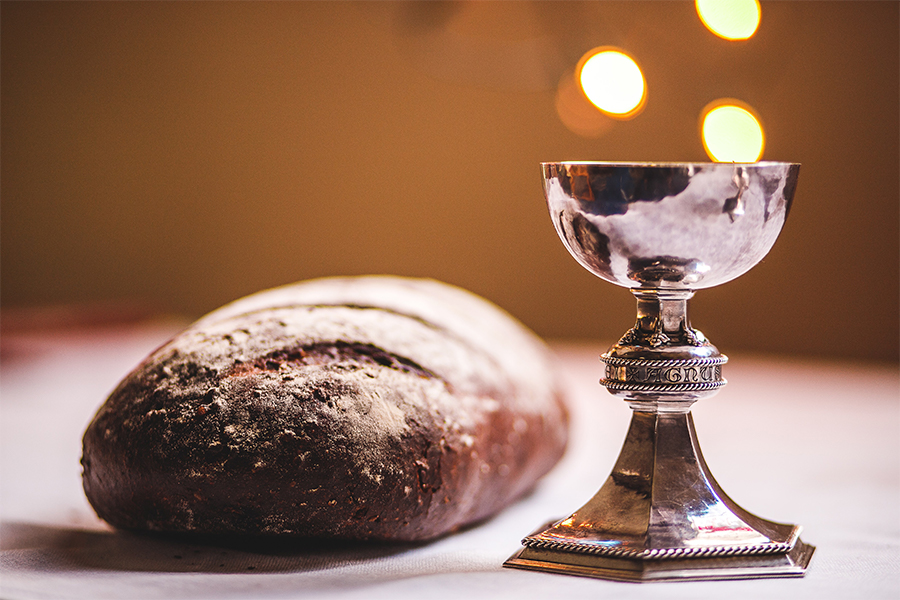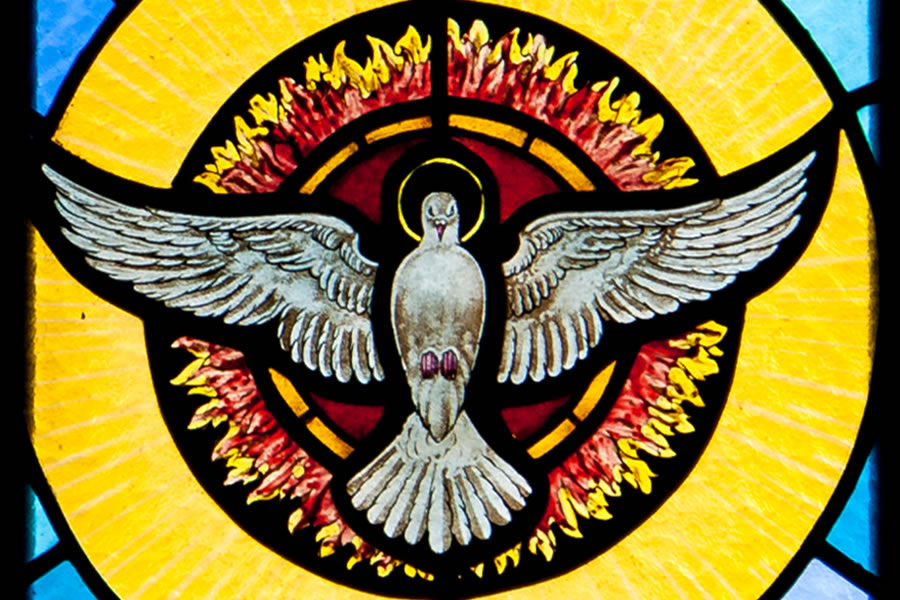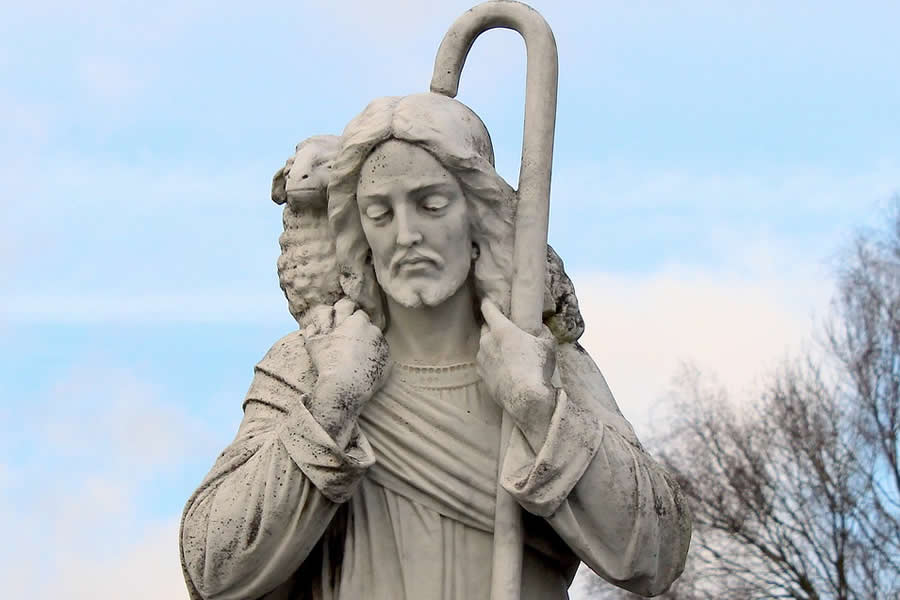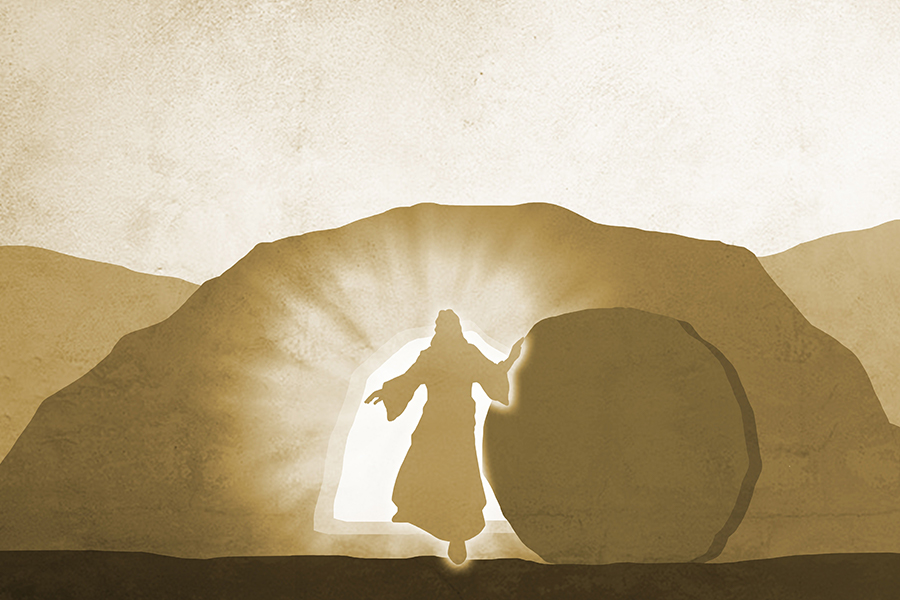St. Francis of Assisi Weekly Reflections

Reaching Out in Prayer
06-27-2021Weekly ReflectionWe Celebrate Worship Resource, Vol. 46, No. 2Two miracles are narrated in today’s Gospel. Through each miracle involves Jesus’ healing power, they unfold in very different ways. In the first instance, a woman who had been ailing for twelve years anonymously and surreptitiously reaches out to Jesus in hopes of a cure. In the other instance, a synagogue official comes right up to Jesus to ask him personally to heal his daughter. Though they approached Jesus in opposite ways, they both come with sincere and total faith. Neither one has any doubt in his ability, just as long as his healing touch was provided. But there is another similarity, easily overlooked. Each makes the bold decision to reach out to Jesus. This is an essential step. Whether making an upfront request or chasing after him to touch his cloak, they take the initiative. Their faith, combined with their desperate need, led them to action. The writer of Wisdom reminds us that God did not create illness and death. God did not intend that the woman and the girl in the Gospel suffer from their afflictions. Jesus gave of himself so that we might have the fullness of life that the Father intended. He suffered so that we might heal. He died so that we might live.
How do you reach out in prayer to the One who brings healing?
Recurriendo en Oración
En el evangelio de hoy se narran dos milagros. Aunque cada milagro involucra el poder sanador de Jesús, se desarrollan de formas muy diferentes. En primer lugar, una mujer que había estado enferma durante doce años de forma anónima y subrepticia se acerca a Jesús con la esperanza de una cura. En el otro caso, un funcionario de la sinagoga se acerca a Jesús para pedirle personalmente que sane a su hija. Aunque se acercaron a Jesús de maneras opuestas, ambos vienen con una fe sincera y total. Ninguno de los dos tiene ninguna duda de su capacidad, siempre y cuando se le proporcione su toque sanador. Pero hay otra similitud que fácilmente se pasa por alto. Cada uno toma la audaz decisión de acercarse a Jesús. Este es un paso fundamental. Ya sea haciendo una solicitud por adelantado o persiguiéndolo para que toque su capa, toman la iniciativa. Su fe, combinada con su desesperada necesidad, los llevó a la acción. El escritor de Sabiduría nos recuerda que Dios no creó la enfermedad y la muerte. Dios no tenía la intención de que la mujer y la niña del Evangelio sufrieran sus aflicciones. Jesús se dio a sí mismo para que pudiéramos tener la plenitud de vida que el Padre deseaba. Sufrió para que pudiéramos curarnos. Murió para que pudiéramos vivir.
¿Cómo recurres a Aquel que te trae sanación en oración?

Quiet! Be Still!
06-20-2021Weekly ReflectionWe Celebrate Worship Resource, Vol. 46, No. 2In today’s Gospel a violent storm interrupts a routine trip across the sea. “Why are you terrified?” Jesus asks the disciples, “Do you not yet have faith?” (Mark 4:40). Very likely Mark included this episode to remind his listeners of the confidence they should continue to find in the Lord. At that time, the church faced period of intense persecution, during which Christians lived in danger of being put to death. They could certainly relate to the fear the first disciples looked to Jesus, “whom even wind and sea obey,” for comfort and protection (4:41). Mark trusted that his audience would do the same. Speaking of persecution, few people have ever suffered as much as Job. But even for Job, God set limits to the damage. Saint Paul was arrested and imprisoned on more than one occasion, so he had every justifiable reason to live in fear. But he refused to do so, trusting in Jesus, who died for all so all can live in him. Even sentenced to death, Paul never lost faith. For even during times of trial—especially during times of trial—Jesus remains with us.
When have you appealed to Jesus in times of fear? Have you been comforted by his presence?
¡Cállate, ¡Enmudece!
En el Evangelio de hoy, una violenta tormenta interrumpe un viaje de rutina por el mar. “¿Por qué tenían tanto miedo?” Jesús pregunta a los discípulos: “¿Aún no tienen fe?” (Marcos 4:40). Es muy probable que Marcos haya incluido este episodio para recordar a sus oyentes la confianza que deben seguir encontrando en el Señor. En ese momento, la iglesia enfrentó un período de intensa persecución, durante el cual los cristianos vivieron en peligro de ser ejecutados. Ciertamente podrían relacionarse con el temor que los primeros discípulos miraron a Jesús, “a quien hasta el viento y el mar obedecen”, en busca de consuelo y protección (4:41). Marcos confiaba en que su audiencia haría lo mismo. Hablando de persecución, pocas personas han sufrido tanto como Job. Pero incluso para Job, Dios puso límites al daño. San Pablo fue arrestado y encarcelado en más de una ocasión, por lo que tenía todas las razones justificables para vivir con miedo. Pero se negó a hacerlo, confiando en Jesús, que murió por todos para que todos vivan en él. Incluso sentenciado a muerte, Pablo nunca perdió la fe. Porque incluso durante los tiempos de prueba— especialmente durante los tiempos de prueba—Jesús permanece con nosotros.
¿Cuándo has recurrido a Jesús en momentos de temor? ¿Te ha consolado su presencia?

The Growing Seed
06-13-2021Weekly ReflectionWe Celebrate Worship Resource, Vol. 46, No. 2It’s really miraculous that every tree, shrub, and plant starts out as a little seed. But it would be a mistake to assume that everything they become is contained within the seeds themselves. Seeds need the nutritive environment of the soil. They need moisture from rain. They need long days of warm, bright sunshine. They need fresh clean air suitable to their climate. They will not grow just sitting at the bottom of a sack of seeds. Nor does the kingdom of God grow without a nourishing environment to feed and sustain it. In Ezekiel’s vision, God takes a tender shoot from a cedar’s crown and replants it on a mountaintop. The small sampling becomes a majestic tree, providing shelter for birds and inspiring awe in humans. The Lebanon cedar is well-known for its longevity, sometimes living up to two thousand years. A sprig replanted in Ezekiel’s lifetime could have provided shade for Jesus and his disciples. A seed planted then could produce a tree still alive today. As incredible as either possibility is, the growth of the kingdom of God can be even more wonderful. But it needs our nurturing love to grow.
What are you doing to give the kingdom of God the nourishing environment it needs to blossom and thrive?
La Semilla que Crece
Es realmente milagroso que cada árbol, arbusto y planta comience como una pequeña semilla. Pero sería un error asumir que todo en lo que se convierten está contenido dentro de las propias semillas. Las semillas necesitan el entorno nutritivo del suelo. Necesitan la humedad de la lluvia. Necesitan largos días de sol cálido y brillante. Necesitan aire fresco y limpio adecuado a su clima. No crecerán simplemente sentados en el fondo de un saco de semillas. El reino de Dios tampoco crece sin un ambiente nutritivo que lo alimente y sostenga. En la visión de Ezequiel, Dios toma un brote tierno de la copa de un cedro y lo vuelve a plantar en la cima de una montaña. La pequeña muestra se convierte en un árbol majestuoso, que brinda refugio a las aves e inspira asombro en los humanos. El cedro del Líbano es bien conocido por su longevidad, a veces viviendo hasta dos mil años. Una ramita replantada durante la vida de Ezequiel podría haber proporcionado sombra a Jesús y sus discípulos. Una semilla sembrada entonces podría producir un árbol todavía vivo hoy. Por increíble que sea una de las dos posibilidades, el crecimiento del reino de Dios puede ser aún más maravilloso. Pero necesita nuestro amor cariñoso para crecer.
¿Qué estás haciendo para darle al reino de Dios el ambiente nutritivo que necesita para florecer y prosperar?

This is my Body
06-06-2021Weekly ReflectionWe Celebrate Worship Resource, Vol. 46, No. 2Listening to Jesus’ words to his disciples at the Last Supper, which we have heard a thousand times, it is worth considering what he did not say. When sharing the bread with his friends, he did not say, “This represents my blood.” Matthew, like the other evangelists who describe this event, uses the Greek word estin, which is translated simply as is. This is his body. This is his blood. It was then, it is now, and it will be for as long as we celebrate the Eucharist. When Moses led the Chosen People in the ritual to memorialize their promise to follow the Lord’s commands, the blood of the animals represented life. It was used in ceremonies to bind two parties to a covenant between the Lord and the Chosen People. Jesus Christ gave his body and blood, his very life, to establish the new covenant, the promise of salvation for the many, redemption for us sinners. This unconditional love, given with his very body and blood, is an everlasting promise, ratified every time we gather to share once more in this Eucharistic sacrifice.
How does receiving Jesus Christ in the Eucharist today empower you to live out your commitment to be a Christian?
Esto Es mi Cuerpo
Al escuchar las palabras de Jesús a sus discípulos en la Última Cena, las mismas que hemos escuchado mil veces, vale la pena considerar lo que no dijo. Al compartir el pan con sus amigos, no dijo: “Esto representa mi sangre”. Mateo, como los otros evangelistas que describen este evento, usa la palabra en griego estin, que se traduce simplemente como es. Esto es su cuerpo. Esta es su sangre. Fue entonces, es ahora y será mientras celebremos la Eucaristía. Cuando Moisés dirigió al Pueblo Elegido en el ritual para conmemorar su promesa de seguir los mandamientos del Señor, la sangre de los animales representaba la vida. Se usaba en ceremonias para unir a dos partes a un pacto entre el Señor y el Pueblo Elegido. Jesucristo dio su cuerpo y sangre, su misma vida, para establecer el nuevo pacto, la promesa de salvación para muchos, redención para nosotros pecadores. Esta amor incondicional, dado con su propio cuerpo y sangre, es una promesa eterna, ratificada cada vez que nos reunimos para compartir una vez más este sacrificio Eucarístico.
¿De qué manera el recibir a Jesucristo en la Eucaristía hoy te empodera para vivir tu compromiso de ser cristiano?

I Am With You Always
05-30-2021Weekly ReflectionWe Celebrate Worship Resource, Vol. 46, No. 2Matthew closes hid Gospel with Jesus’ final words to him and the other disciples before he ascended to heaven: “Go, therefore, and make disciples of all nations, baptizing them in the name of the Father, and of the Son, and of the Holy Spirit, teaching them to observe all that I have commanded you” (Matthew 28:19- 20). In one sentence, Jesus commissions them to do three things: make disciples, baptize, and teach. This commission is the commission of all subsequent disciples as well. Therefore, we too are called to make disciples, baptize, and teach. We do this in the name of all three person of the Trinity, assured of God’s presence with us. In the first chapter of the Gospel, Matthew referred to Jesus as Emmanuel, meaning “God is with us” (1:23). Now, as he closes his Gospel, Jesus says to his disciples, “I am with you always, until the end of the age” (28:20). God is with us always, and the gift of the Holy Spirit assures us of that. The Holy Spirit bears witness that we are children of God, brothers and sisters of Jesus Christ, adopted into God’s family. As Moses said generations earlier, “Did anything so great ever happen before?” (Deuteronomy 4:32).
How can you fulfill your commission as a disciple in your community, your workplace, your family?
Yo Estaré Con Ustedes Siempre
Mateo cierra su Evangelio con las últimas palabras de Jesús para él y los otros discípulos antes de ascender al cielo: “Id, pues, y haced discípulos a todas las naciones, bautizándolos en el nombre del Padre y del Hijo y del Espíritu Santo, enseñándoles a guardar todo lo que os he mandado” (Mateo 28:19-20 ). En una oración, Jesús les encarga hacer tres cosas: hacer discípulos, bautizar y enseñar. Esta comisión también es la comisión de todos los discípulos posteriores. Por eso, también nosotros estamos llamados a hacer discípulos, bautizar y enseñar. Hacemos esto en nombre de las tres personas de la Trinidad, seguros de la presencia de Dios con nosotros. En el primer capítulo del Evangelio, Mateo se refirió a Jesús como Emmanuel, que significa “Dios está con nosotros” (1:23). Ahora, al cerrar su Evangelio, Jesús dice a sus discípulos: “Yo estaré con ustedes siempre, hasta el fin de los tiempos” (28:20). Dios está con nosotros siempre y el don del Espíritu Santo nos lo asegura. El Espíritu Santo da testimonio de que somos hijos de Dios, hermanos y hermanas de Jesucristo, adoptados en la familia de Dios. Como dijo Moisés generaciones antes, “¿Ha sucedido algo tan grandioso antes?” (Deuteronomio 4:32).
¿Cómo puedes cumplir con tu comisión como discípulo en tu comunidad, en tu lugar de trabajo, en tu familia?

Spirit Guide Me
05-23-2021Weekly ReflectionWe Celebrate Worship Resource, Vol. 46, No. 2When the apostles received the Holy Spirit, they immediately began to speak in different tongues, enabling people from every nation to hear and understand them in their own language. In the Vigil readings, the story of the tower of Babel was proclaimed. People scattered from Babel after they could no longer understand each other. In the world today, it often doesn’t even take different languages for people to fail to understand each other. We can be people of Babel, taking refuge in our isolated towers, refusing to hear the words of those who don’t agree with us, who don’t think like we do, who don’t understand “where we’re coming from.” But none of us come from Babel. We may come from different families, different neighborhoods, different cultures, different nations, different worlds. But the Holy Spirit draws us together and enables us to understand each other, as in Jerusalem at the first Pentecost. The Holy Spirit, the Spirit of truth, as Jesus testified, the Spirit who is manifested in each of us for some benefit, as Paul wrote, enables us to bridge divisions. The Spirit calls us to dialogue, to listen, in Spirit and in truth, in the Spirit of truth, and become truly one in body. A mighty act of God, indeed.
How will you reach out to someone different, in Spirit and in truth, to seek understanding?
Guíame Espíritu
Cuando los apóstoles recibieron el Espíritu Santo, inmediatamente comenzaron a hablar en diferentes lenguas, lo que permitió a personas de todas las naciones escucharlos y comprenderlos en su propio idioma. En las lecturas de la Vigilia, se proclamó la historia de la torre de Babel. La gente se dispersó de Babel después de que ya no podían entenderse. En el mundo de hoy, a menudo ni siquiera se necesitan diferentes idiomas para que las personas no se entiendan entre sí. Podemos ser gente de Babel, refugiándonos en nuestras torres aisladas, negándonos a escuchar las palabras de quienes no están de acuerdo con nosotros, que no piensan como nosotros, que no entienden “de dónde venimos”. Pero ninguno de nosotros venimos de Babel. Podemos provenir de diferentes familias, diferentes vecindarios, diferentes culturas, diferentes naciones, diferentes mundos. Pero el Espíritu Santo nos une y nos permite entendernos, como en Jerusalén en el primer Pentecostés. El Espíritu Santo, el Espíritu de verdad, como testificó Jesús, el Espíritu que se manifiesta en cada uno de nosotros para algún beneficio, como escribió Pablo, nos capacita para salvar las divisiones. El Espíritu nos llama al diálogo, a escuchar, en Espíritu y en verdad, en el Espíritu de verdad, y convertirnos verdaderamente en uno en cuerpo. De hecho, un gran acto de Dios.
¿Cómo te acercarías a alguien diferente, en Espíritu y en verdad, para buscar entendimiento?

We are Called to be Doers
05-16-2021Weekly ReflectionWe Celebrate Worship Resource, Vol. 46, No. 2Are you a doer or just an observer? The first disciples had plenty of opportunities to observe Jesus as he preached, taught, healed, and drove out demons. His ascension to his Father in heaven was certainly a sight to see as well. But Jesus never told the disciples, “Just sit back and watch.” No, Jesus sent the disciples forth to cure the sick, drive out demons, and announce the coming of the kingdom of God. Today we hear the disciples being asked why they are standing around looking at the sky. After all, the last words Jesus said before being lifted up were, “But you will receive power when the Holy Spirit comes upon you, and you will be my witnesses...to the ends of the earth” (Acts 1:8). Earlier, Jesus called on them to “Go into the whole world and proclaim the gospel” (Mark 16:15). Disciples are called to be doers, not watchers. We are called to be doers. The Holy Spirit came upon us in baptism, so we already have the power. In the second reading, Paul refers to the collection of all who believe, the church, as the body of Christ. We are the body of Christ. More than that, we are Christ’s hands in this world, feeding the hungry, clothing the naked, housing the homeless, rescuing the lost, working for justice and peace. Doing.
What will you do as a disciple?
Nosotros estamos llamados a ser Hacedores
Eres un hacedor o simplemente un observador? Los primeros discípulos tuvieron muchas oportunidades de observar a Jesús mientras predicaba, enseñaba, sanaba y expulsaba demonios. Su ascensión a su Padre en los cielos fue ciertamente un espectáculo digno de ver también. Pero Jesús nunca les dijo a los discípulos: “Siéntense y observen”. No, Jesús envió a los discípulos para sanar a los enfermos, expulsar demonios y anunciar la venida del reino de Dios. Hoy escuchamos a los discípulos que se les pregunta por qué están parados mirando al cielo. Después de todo, las últimas palabras que Jesús dijo antes de ser levantado fueron: “Pero cuando el Espíritu Santo descienda sobre ustedes, los llenará de fortaleza y serán mis testigos...hasta los últimos rincones de la tierra” (Hechos 1:8). Anteriormente, Jesús los llamó a “Id por todo el mundo y prediquen el evangelio” (Marcos 16:15). Los discípulos están llamados a ser hacedores, no vigilantes. Nosotros estamos llamados a ser hacedores. El Espíritu Santo vino sobre nosotros en el bautismo, así que ya tenemos el poder. En la segunda lectura, Pablo se refiere a la acumulación de todos los que creen, la iglesia, como el cuerpo de Cristo. Nosotros somos el cuerpo de Cristo. Más que eso, somos las manos de Cristo en este mundo, alimentando a los hambrientos, vistiendo a los desnudos, albergando a los desamparados, rescatando a los perdidos, trabajando por la justicia y la paz. Haciendo.
¿Qué harás tú como discípulo?

Love One Another as I Love You
05-09-2021Weekly ReflectionWe Celebrate Worship Resource, Vol. 46, No. 2With the word love appearing in today’s readings over a dozen times, it is tempting to imagine an idyllic scene with family and friends gathered together holding hands and telling each other how much they care for each other. But the love Jesus calls us to is a lot more challenging. After all, he said that the greatest love is the willingness “to lay down one’s life for one’s friends” (John 15:13). The very next day he did exactly that, but not just for his friends. He did it for everyone, everywhere, including generations of people who had not yet been born, including us. “Love one another as I love, you,” Jesus commanded (15:12). This is the selfless and unconditional love we are called to. We are to care for others as much as ourselves. This, he says, makes our joy complete. We live not just for ourselves, but for others: our parents, spouse, and children; our friends, neighbors, and acquaintances; the senior citizen in the nursing home, the prisoner serving a life sentence, the unborn baby in the womb, the family living in poverty on the other side of the tracks or halfway around the world. We are all God’s children, so we are all sisters and brothers, all worthy of our love.
How do you share the love God has for you with your brothers and sisters?
Amense Unos a los Otros Como los Amo Yo
Con la palabra amor apareciendo en las lecturas de hoy más de una docena de veces, es tentador imaginar una escena idílica con familiares y amigos reunidos tomados de la mano y diciéndose lo mucho que se quieren. Pero el amor al que Jesús nos llama es mucho más desafiante. Después de todo, dijo que el amor más grande es la disposición “a dar la vida por los amigos” (Juan 15:13). Al día siguiente hizo exactamente eso, pero no solo para sus amigos. Lo hizo por todos en todas partes, incluidas generaciones de personas que aún no habían nacido, incluidos nosotros. “Ámense los unos a los otros como yo lo he amado”, ordenó Jesús (15:12). Este es el amor desinteresado e incondicional al que estamos llamados. Debemos cuidar a los demás tanto como a nosotros mismos. Esto, dice él, completa nuestra alegría. Vivimos no solo para nosotros, sino para los demás: nuestros padres, cónyuge e hijos; nuestros amigos, vecinos y conocidos; el anciano en el hogar de ancianos, el preso que cumple cadena perpetua, el feto en el útero, la familia que vive en la pobreza al otro lado de las vías o al otro lado del mundo. Todos somos hijos de Dios, por lo que todos somos hermanos y hermanas, todos dignos de nuestro amor.
¿Cómo compartes el amor que Dios tiene por ti con tus hermanos y hermanas?

You Have the Power to Bear Fruit
05-02-2021Weekly ReflectionWe Celebrate Worship Resource, Vol. 46, No. 2From Easter to Pentecost, each Sunday’s first reading is a passage from the Acts of the Apostles. The second part of Luke’s writings, Acts tells of the early Christian church, working to fulfill its mission to spread the gospel to all the world. It was not an easy task. Persecution, hardships, and disagreements often left the disciples dispirited and adrift. So if Christians from that time were to hear that “the church throughout all Judea, Galilee, and Samaria was at peace” (Acts 9:31), they might have concluded that their persecutors, such as Saul, who in the previous chapter of Acts was said to be dragging people out of their homes, so intent was he on destroying the church, had been defeated, or to use words from the Gospel, had been thrown into a fire and burned. But the Lord did not see Saul as irredeemable. While the first Christians reacted in fear, Jesus showed mercy. Jesus saw in Saul/Paul a person with the zeal and talent to spread the gospel to the ends of the earth, to bear fruit for the church. As Jesus remains in us and we remain on the true vine, we too are empowered to bear fruit in answering the call of spreading the Good News.
How do you bear fruit in your words and actions?
Tu Tienes el Poder de Dar Fruto
Desde Pascua hasta Pentecostés, la primera lectura de cada domingo es un pasaje de los Hechos de los Apóstoles. La segunda parte de los escritos de Lucas, Hechos, habla de la iglesia cristiana primitiva, trabajando para cumplir su misión de difundir el evangelio por todo el mundo. No fue una tarea fácil. La persecución, las dificultades y los desacuerdos a menudo dejaban a los discípulos desanimados y a la deriva. Entonces, si los cristianos de ese tiempo escucharan que “la iglesia en toda Judea, Galilea y Samaria estaba en paz” (Hechos 9:31), podrían haber concluido que sus perseguidores, como Saul, quien en el capítulo anterior de Hechos, decía que estaba arrastrando a la gente fuera de sus hogares, por lo que estaba decidido a destruir la iglesia, había sido derrotado o, para usar palabras del Evangelio, había sido arrojado al fuego y quemado. Pero el Señor no vio a Saul como irredimible. Mientras que los primeros cristianos reaccionaron con miedo, Jesús mostró misericordia. Jesús vio en Saul/Pablo a una persona con el celo y el talento para difundir el evangelio hasta los confines de la tierra, para dar fruto para la iglesia. Mientras Jesús permanece en nosotros y nosotros permanecemos en la vid verdadera, también nosotros tenemos el poder de dar fruto al responder al llamado de difundir las Buenas Nuevas.
¿Cómo fructificas en tus palabras y acciones?

How are You Like the Good Shepherd?
04-25-2021Weekly ReflectionWe Celebrate Worship Resource Vol. 46, No. 2God parents do everything they can to take care of their children. Though they hope it never would be necessary, they would sacrifice their own lives to save their children. If their toddler ran out into the street they would run after them without thinking to save them from danger. Jesus, the Good Shepherd, is the same. While on earth, he lived his life in service of others, ultimately laying down his life to save us from the danger of sin and evil. Unlike a shepherd for hire, who will abandon the sheep if danger arises, Jesus cares for his sheep as a parent cares for their children. Unlike other shepherds who care only for their own sheep, the Good Shepherd regards all God’s children as his sheep, whether they belong to the fold or not. We are children of God, as John wrote in his letter. We share in the power that comes from Jesus, as Peter testified. God calls us each to live our life to serve others, like a good parent, like the Good Shepherd, taking care of others, for all are daughters and sons of the Lord.
How does having the Good Shepherd watching over you reassure you? How can you imitate the Good Shepherd in caring for others?
¿Cómo es Usted Como el Buen Pastor?
Los buenos hacen todo lo posible por cuidar a sus hijos. Aunque esperan que nunca sea necesario, sacrificarían sus vidas ganadas para salvar a sus hijos. Si su niño pequeño salía corriendo a la calle, corría tras ellos sin pensar en salvarlos del peligro. Jesús, lo mismo. Mientras estuvo en la tierra, el Buen Pastor, hace vivió su vida al servicio de los demás, y finalmente entregó su vida para salvarnos del peligro del pecado y el mal. A diferencia de un pastor de alquiler, que abandonará las ovejas si surge el peligro, Jesús cuida de sus ovejas como un padre cuida de sus hijos. A diferencia de otros pastores que solo cuidan de sus propias ovejas, el Buen Pastor considera a todos los hijos de Dios como sus ovejas, pertenezcan o no al redil. Somos hijos de Dios, como escribió Juan en su carta. Compartimos el poder que viene de Jesús, como testificó Pedro. Dios nos llama a cada uno a vivir nuestra vida para servir a los demás, como un buen padre, como el Buen Pastor, cuidando a los demás, a todas las hijas e hijos del Señor.
¿Cómo te tranquiliza tener al Buen Pastor velando por ti? ¿Cómo puedes imitar al Buen Pastor en el cuidado de los demás?

Repent and be Converted
04-18-2021Weekly ReflectionWe Celebrate Worship Resource, Vol. 46, No. 2Jesus gave the disciples work to do in today’s Gospel. He told them “that repentance, for the forgiveness of sins, would be preached in his name to all the nations, beginning from Jerusalem” (Luke 24:47). The disciples, witnesses to this, were to see that this was done. In the first reading, we hear Saint Peter doing exactly that. And he does not shy from confrontation, accusing the people of Jerusalem of being responsible for Jesus’ death, hammering them repeatedly: “you handed (him) over...you denied (him)...you put (him) to death” (Acts 3:13-15). Peter closes by offering them an opportunity for repentance and the assurance of forgiveness, as Jesus asked them to do, as Jesus had effectively offered him. Saint John does the same in the second reading, calling Jesus an advocate on our behalf, having died for the sins of the whole world. We are now those disciples, witnesses in a spiritual sense. Assured of forgiveness, we are called to repent of our sins and share that forgiveness with one another.
For what do you need to repent? Whom should you forgive?
Arrepiéntense y Conviértanse
Jesús les dio una instrucción a los discípulos en el evangelio de hoy. Les dijo “que en su nombre se predicaría la necesidad de volverse a Dios y el perdón de los pecados, comenzando por Jerusalén” (Lucas 24:47). Los discípulos, testigos de esto, verían que esto se hiciera. En la primera lectura, escuchamos a San Pedro haciendo exactamente eso. Y no rehúye la confrontación, acusando a la gente de Jerusalén de ser responsable de la muerte de Jesús, martilleándolos repetidamente: “ustedes lo entregaron...lo negaron...lo mataron” (Hechos 3:13-15). Pedro cierra ofreciéndoles una oportunidad para el arrepentimiento y la seguridad del perdón, como Jesús les pidió que hicieran, como Jesús efectivamente le había ofrecido. San Juan hace lo mismo en la segunda lectura, llamando a Jesús abogado por nosotros, habiendo muerto por los pecados del mundo entero. Ahora somos esos discípulos, testigos en un sentido espiritual. Asegurados del perdón, estamos llamados a arrepentirnos de nuestros pecados y compartir ese perdón unos con otros.
¿Por qué necesitas arrepentirte? ¿A quién debes perdonar?

Blessed are Those Who Have Not Seen and Believe
04-11-2021Weekly ReflectionWe Celebrate Worship Resource, Vol. 46, No. 2Saint Thomas missed more than seeing Jesus in the flesh on that evening of the first day of the week. He also missed Jesus’ gift of the Holy Spirit. Before he died, Jesus promised his disciples that he and the Father would send the Holy Spirit, the “Advocate,” who would guide them to the truth, who would advocate for them before and unbelieving world. Thomas was not there to see the Lord, so he was not there to receive guidance to the truth; he was not there to receive and advocate to overcome his doubt. Each of us received the Holy Spirit in baptism. We are filled with the Spirit, supported by the Advocate. Despite our differences, even among family members or neighbors, we can be one heart and mind in our faith, like the first Christian community. Each of us bears witness to Christ’s resurrection, an event that transforms our lives and gives us the power to transform our world. May the Holy Spirit within us all advocate for the truth, so that, recognizing the risen Lord in each other, we may testify, like Thomas, “My Lord and my God!” (John 20:28)
How do you bear witness to the Resurrection and its effects on your life?
Dichoso los que creen sin haber visto
Santo Tomás se perdió más que ver a Jesús en la carne esa noche del primer día de la semana. También se perdió el don del Espíritu Santo de parte de Jesús. Antes de morir, Jesús prometió a sus discípulos que él y el Padre enviarían al Espíritu Santo, el “Abogado”, que los guiaría a la verdad, que los defendería ante el mundo incrédulo. Tomás no estaba allí para ver al Señor, por lo que no estaba allí para recibir orientación hacia la verdad; no estaba allí para recibir y abogar para superar sus dudas. Cada uno de nosotros recibió el Espíritu Santo en el bautismo. Estamos llenos del Espíritu, apoyados por el Abogado. A pesar de nuestras diferencias, incluso entre familiares o vecinos, podemos ser un solo corazón y una sola mente en nuestra fe, como la primera comunidad cristiana. Cada uno de nosotros da testimonio de la resurrección de Cristo, un evento que transforma nuestras vidas y nos da el poder de transformar nuestro mundo. Que el Espíritu Santo dentro de nosotros abogue por la verdad, para que, reconociendo en los demás al Señor resucitado, testifiquemos, como Tomás, “¡Señor mío y Dios mío! (Juan 20:28)
¿Cómo das testimonio de la resurrección y sus efectos en tu vida?

Easter is Just the Beginning... HE LIVES!
04-04-2021Weekly ReflectionWe Celebrate Worship Resource, Vol. 46, No. 2Three people appear in the Easter Gospel: Mary of Magdala, Peter, and the disciple whom Jesus loved, generally regarded as John. Two were present at the foot of the cross on Good Friday. Mary of Magdala comforted Jesus’ mother as Jesus was executed. In some of his last words, Jesus entrusted his mother into John’s care. Now Mary of Magdala purposefully finds John when she saw that the tomb was empty. Though Mary would have been there too, she does not summon her, perhaps not wishing to upset her any further with this news. But she also ran to one other disciple: Peter, who thrice denied knowing him. Peter, who likely wept in shame each subsequent morning when hearing the cock crow. Perhaps he was relieved this morning to have an emergency to distract him from his guilt. Peter, ashamed of his behavior, and John, concerned for his adopted mother, ran as fast as they could to the empty tomb. When they got there, impetuous Peter leapt right in, as reflective John saw and believed. The empty tomb is not the end. Easter is just the beginning. HE LIVES! May Christ rise in us as he did in his closest disciples on that first Easter morn.
How does Christ rise in you on this Easter Sunday?
La Pascua es solo el Comienzo. ¡EL VIVE!
En el evangelio pascual aparecen tres personas: María de Magdala, Pedro y el discípulo a quien Jesús amaba, generalmente considerado como Juan. Dos estuvieron presentes al pie de la cruz el Viernes Santo. María de Magdala consoló a la madre de Jesús cuando Jesús fue ejecutado. En algunas de sus últimas palabras, Jesús confió a su madre al cuidado de Juan. Ahora María de Magdala busca a Juan cuando vio que la tumba estaba vacía. Aunque María también habría estado allí, no la llama, tal vez no deseando molestarla más con esta noticia. Pero también corrió hacia otro discípulo: Pedro, quien tres veces negó conocerlo. Pedro, quien probablemente lloró de vergüenza cada mañana siguiente al escuchar el canto del gallo. Quizás se sintió aliviado esta mañana de tener una emergencia para distraerlo de su culpa. Pedro, avergonzado de su comportamiento, y Juan, preocupado por su madre adoptiva, corrieron tan rápido como pudieron hacia la tumba vacía. Cuando llegaron allí, el impetuoso Pedro entró directamente, el reflexivo de Juan lo vio y creyó. La tumba vacía no es el final. La Pascua es solo el comienzo. ¡EL VIVE! Que Cristo resucite en nosotros como lo hizo en sus discípulos más cercanos en esa primera mañana de Pascua.
¿Cómo resucita Cristo en ti este domingo de Pascua?